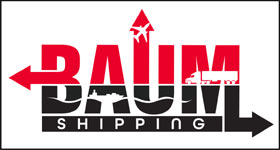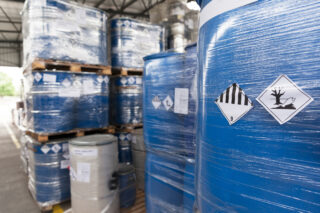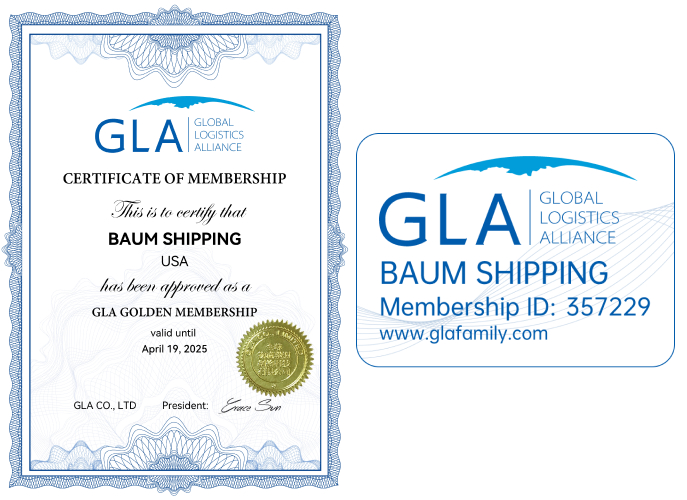Understanding the Complex Path of Hazardous Material Transportation with Baum Shipping
October 4, 2023 Uncategorized
Navigating through the intricate world of hazardous materials transportation requires a specialized set of skills, knowledge, and unwavering adherence to numerous regulations and guidelines. The government takes hazardous materials extremely seriously, for good reason, so it is imperative it is taken care of by a team of experts.
At Baum Shipping, an internationally recognized freight forwarding company specializing in both domestic and international shipping of hazardous materials, we prioritize safety, compliance, and expertise to ensure seamless, secure, and responsible logistics solutions. If you need hazardous materials transported, call (800) 383-3157 today to speak with a member of our dedicated team or fill out a quick form to get a free quote.
Defining Hazardous Materials
Hazardous materials, often referred to as HazMat, are substances that, due to their chemical nature, pose a potential risk to life, health, property, and the environment during transportation. These materials range from everyday items such as certain batteries and paints to more specialized substances like flammable liquids and toxic chemicals.
1. What Constitutes a Hazardous Material?
The identification of a substance as hazardous is determined by various regulatory bodies globally, such as the U.S. Department of Transportation (DOT) and the European Agreement concerning the International Carriage of Dangerous Goods by Road (ADR), based on the physical and chemical properties that may render them dangerous during transportation.
2. Key Regulations and Compliance Standards
Adhering to the varied international and domestic regulatory standards is imperative. Some key regulations include:
- International Air Transport Association (IATA) Regulations: Governing the transportation of hazardous materials by air.
- International Maritime Dangerous Goods (IMDG) Code: Regulating sea transportation of hazardous goods.
- 49 CFR (Code of Federal Regulations): Guidelines for the transportation of hazardous materials within the United States.
Hazard Classes and Divisions
Categorizing hazardous materials ensures their proper handling, storage, and transportation, mitigating risks and ensuring safety across the supply chain.
1. Breakdown and Explanation of Various Hazard Classes
Hazardous materials are categorized into nine primary classes:
- Class 1: Explosives
- Class 2: Gases
- Class 3: Flammable Liquids
- Class 4: Flammable Solids
- Class 5: Oxidizing Substances and Organic Peroxides
- Class 6: Toxic and Infectious Substances
- Class 7: Radioactive Material
- Class 8: Corrosive Substances
- Class 9: Miscellaneous Dangerous Goods
Each class may be further divided into divisions to more precisely identify the nature of the hazard.
2. Understanding Labeling and Placarding Requirements
Precise labeling and placarding of hazardous materials are vital to safeguard transportation. Each class and division has specific symbols and labels that indicate the nature of the hazard, aiding in instantaneous recognition and appropriate response in emergency situations.
Packaging and Handling
The effective and safe transportation of hazardous materials relies heavily on robust packaging and skilled handling practices.
1. Best Practices for Packaging Hazardous Materials Safely
- Material Selection: Utilizing materials that are resistant to leaks, punctures, and damages, ensuring containment of the hazardous substance.
- Sealing Techniques: Employing high-quality and resistant sealing methods to prevent accidental spillage.
- Shock Absorption: Using absorbent materials and cushions to protect the contents from shocks and vibrations during transit.
2. Handling Emergencies and Spills Effectively
- Emergency Planning: Implementing well-structured emergency response plans, tailored to different types of hazardous materials and potential incident scenarios.
- Training: Ensuring all personnel are adequately trained to manage emergencies and understand the correct protocols to contain spills, prevent contamination, and safeguard individuals in the vicinity.
Baum Shipping – Your Hazardous Materials Experts
At Baum Shipping, we are steadfastly committed to ensuring that the complex journey of hazardous materials from origin to destination is handled with the utmost precision, compliance, and safety. Our team of experts is adept at navigating through the intricate maze of regulations and guidelines, safeguarding your shipments, and guaranteeing a secure, responsible, and efficient logistics solution.
Embracing the responsibility of transporting hazardous materials goes beyond regulatory compliance. It is about safeguarding communities, protecting environments, and ensuring the integrity of the goods in transit. Contact us at (800) 383-3157 and let’s navigate through the complexities of hazardous material transportation together, with expertise, safety, and reliability as our steadfast anchors.



